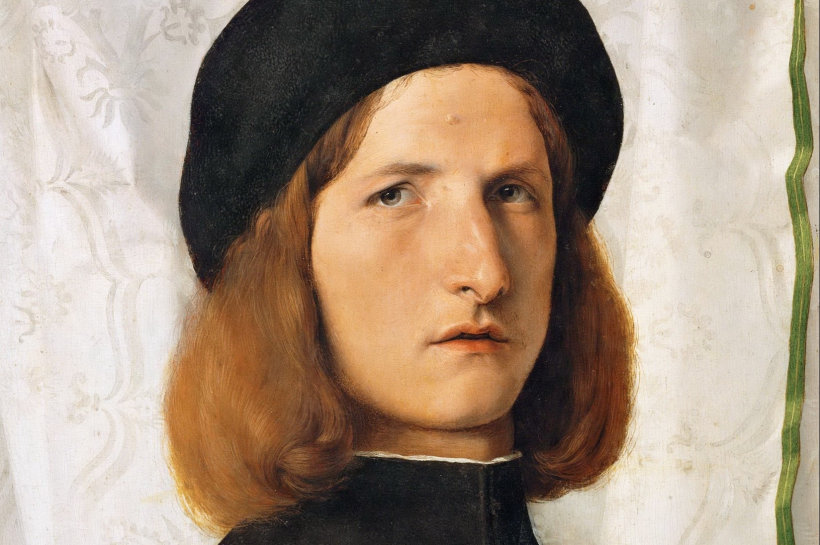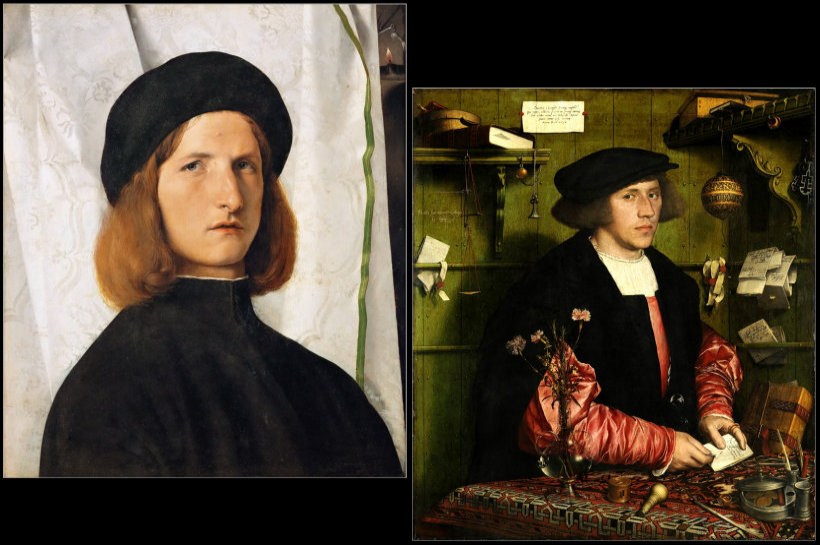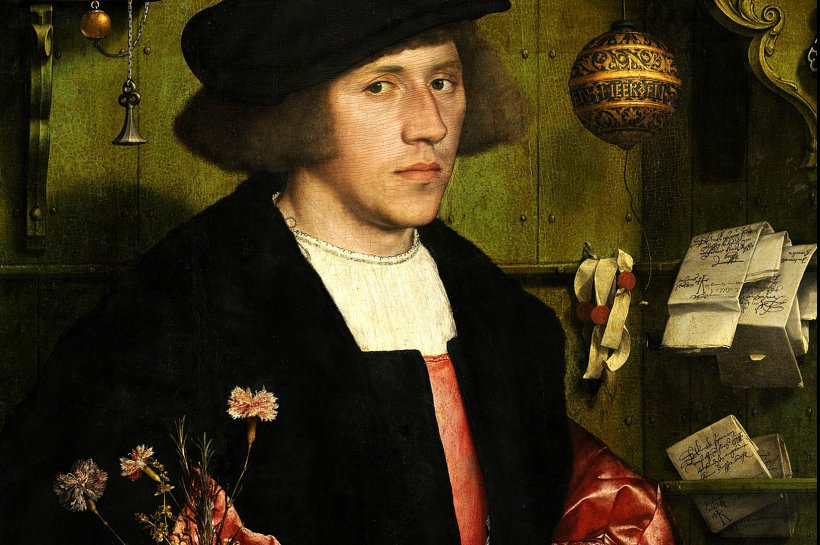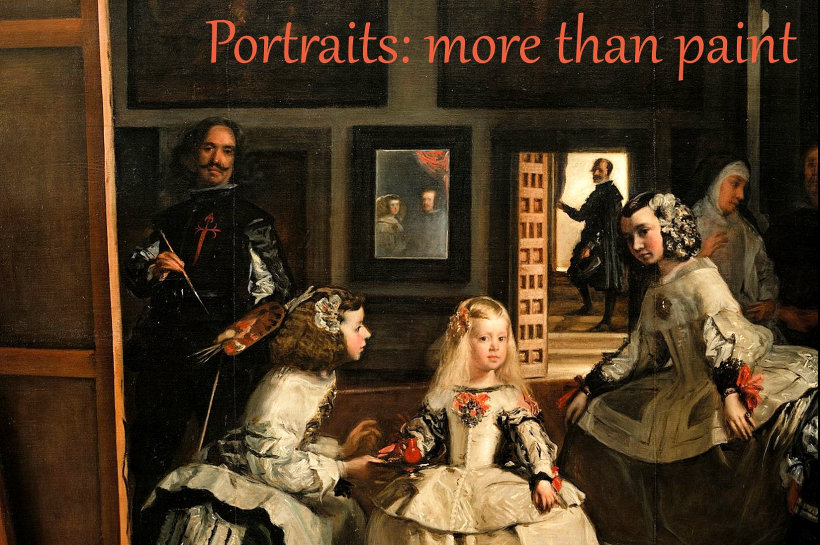Here are brief bios of the artists, composers, and writers considered in the class, listed in order of birth.
An alphabetical listing of artists for the whole course can be found at the
BIOS link on the syllabus page.
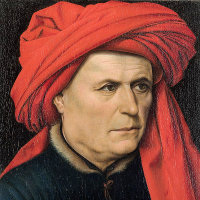 |
Robert Campin, 1375–1444. Netherlandish painter.
Campin has gradually emerged from scholarly shadows as the probable painter of a handful of works previously attributed to a conjectural "Master of Flémalle." In spite of the still-uncertain identification of many works associated with him, there is no doubt of his status as a key figure in the transition of Northern art from Gothic traditions to modernity. [The portrait here is by him, but probably not of him.]
|
 |
Jan van Eyck, 1390–1441. Netherlandish painter.
The most celebrated and influential northern painter in the earlier 15th century, responsible for developing a style of oil painting capable of magnificent detail and effects of light. His major work, the altarpiece in Ghent Cathedral, is recorded to have been begun by his perhaps even greater brother Hubert. He was a renowned portraitist, including the enigmatic Arnolfini Marriage in London, and the supposed self-portrait seen here.
|
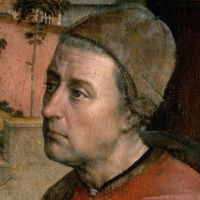 |
Rogier van der Weyden, 1399–1464. Netherlandish painter.
Very little is known of Rogier's life, except that he was highly successful in his time, with his works exported to Italy and Spain, and commissioned by princes both in the Netherlands and abroad. His extraordinary detail and emotionally intense compositions now place him firmly with Jan van Eyck and Robert Campin in the trinity of early Netherlandish masters. The image is a detail from his Saint Luke Drawing the Virgin, assumed to be a self-portrait.
|
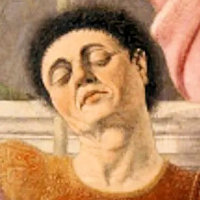 |
Piero della Francesca, 1415–92. Italian painter.
Born in Borgo San Sepolcro in Umbria, he also worked in Arezzo, Urbino, and elsewhere. Though virtually forgotten after his death, he has been reappraised in the 20th century as filling the gap between the early and High Renaissance. Intensely interested in perspective, his work has a mathematical rigor that adds tautness to his often unconventional compositions, and his gift for color is matched by few others of his time. The self-portrait is conjectural.
|
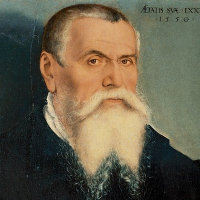 |
Lucas Cranach the Elder, 1472–1553. German painter and printmaker.
After some years in Vienna, he moved in 1504 to Wittenberg, as court painter to Frederick III. A close friend of Martin Luther's, he was one of the leading artists of the Protestant movement.
|
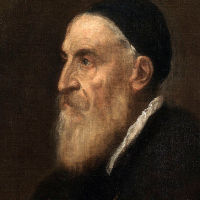 |
Tiziano Vecellio (Titian), 1485–1576. Venetian painter.
Arguably the greatest Venetian painter of the High Renaissance, he produced works in just about every genre over an exceptionally long career. Probably his greatest influence was in his handling of paint and use of color, which became a starting point for Rubens and others in the next century.
|
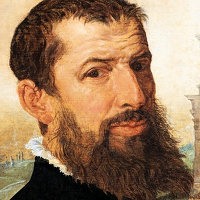 |
Maerten van Heemskerck, 1498–1574. Netherlandish painter.
After training in Utrecht and opening his own studio in Haarlem, he made a long visit to Italy (1532–36) which made a strong impression on his subsequent art, especially the example of Michelangelo.
|
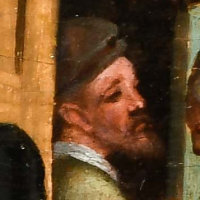 |
Aert Pieterszoon, 1550–1612. Dutch painter.
Little is known about this painter of the earlier Golden Age, other than some portraits and allegories. [This detail from one of Pieterz's paintings is only a possible self-portrait.]
|
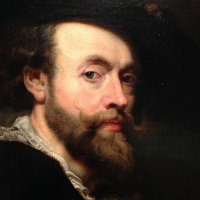 |
Peter Paul Rubens, 1577–1640. Flemish painter and diplomat.
One of the giants of baroque art, Rubens developed the style of Titian into a powerful rhetoric applied equally to sacred and profane subjects, and exerted enormous influence in Spain, England, and France as well as in his native Flanders, continued in the work of his many pupils. His position at so many courts also made him invaluable as a diplomat.
|
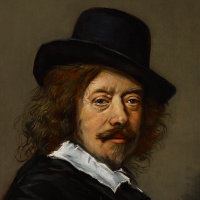 |
Frans Hals, 1582–1666. Dutch painter.
Though born in Antwerp, he moved to Harlem with his parents and spent the rest of his life there. 24 years older than Rembrandt, he was the first great master of the Dutch Golden Age and its leading portraitist. His style is remarkable for the effects he could achieve from a few swift touches of paint.
|
 |
Thomas de Keijzer, 1596–1667. Dutch painter.
Coming from a family of artists, Keijzer (also spelled Keyser) was the leading portraitist in Amsterdam before being eclipsed by Rembrandt in the 1630s. He is known especially for his group portraits. [The portrait here may be by him, but is probably not of him.]
|
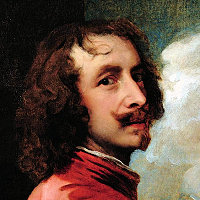 |
Anthony Van Dyck, 1599–1641. Flemish painter.
For a time the principal assistant to Peter Paul Rubens, Van Dyck had a shorter but similarly stellar and varied career, painting in most of the major baroque genres. He was especially known as a portraitist, particularly in England, where he served the courts of both James I and Charles I.
|
 |
Rembrandt Harmenzoon van Rijn, 1606–69. Dutch painter and printmaker.
The greatest artist of the Dutch Golden Age, he nonetheless retained his own style which set him apart from his contemporaries. There is a strong baroque influence earlier in his career, but his later work developed a quality of deep introspection in which the subject seems to glow within rich layers of paint.
|
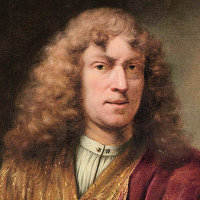 |
Ferdinand Bol, 1616–80. Dutch painter.
Much of his surviving work has been wrongly attributed to his master, Rembrandt, but in fact Bol rose to become the most successful Amsterdam painter in the mid-17th century.
|
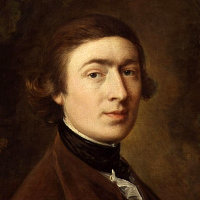 |
Thomas Gainsborough, 1727–88. English painter.
He became the dominant English portrait painter in the second half of the 18th century, but also produced numerous independent landscapes for his own pleasure. In 1768, he became a foundation member of the new Royal Academy.
|
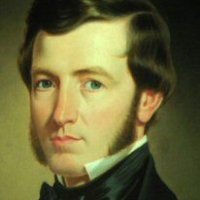 |
William Billings, 1746–1800. American composer.
Originally a tanner by trade, he became one of the first American-born composers, essentially self-taught, writing hymns, somewhat more complex "fuguing tunes," and patriotic songs.
|
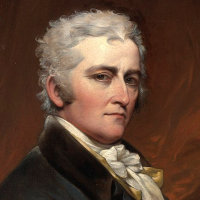 |
John Trumbull, 1756–1843. American painter.
Trumbull fought in the American War of Independence, and founded his career on depictions of battles and other key historical events. He spent several years in London working with Benjamin West, and was even imprisoned there for several months for his part in the Revolution.
|
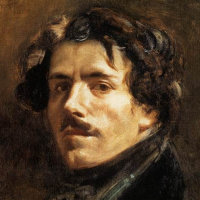 |
Eugène Delacroix, 1798–1863. French painter.
The leading French painter of the Romantic movement, he is known for his brilliant Rubensian color and his dramatic compositions. Especially in the first half of his career, these included political themes, such as The Massacre at Chios (1824) and Liberty Leading the People (1830), as well as subjects from Romantic literature. He also visited North Africa, and was constantly fascinated by the exotic.
|
 |
Alfred Lord Tennyson, 1809–92. English poet.
Known for his lyrical poems and his Arthurian epic Idylls of the King, Tennyson was appointed Poet Laureate to Queen Victoria in 1850 and held the position until his death. He adopted his characteristic tone of elegaic retrospection relatively early, and carried it through a long career that established him as the most resonant voice of the Victorian era.
|
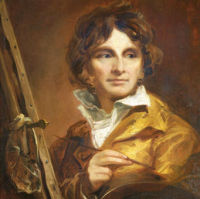 |
Thomas Jones Barker, 1813–82. English painter.
Born in Bath, the son of a minor painter, Barker moved to Paris in 1834 to study with Horace Vernet. After considerable success in France, he returned to England in 1845, becoming a fashionable portraitist and specialist in historical and battle pictures. His most famous picture, The Secret of England's Greatness (1863) is an icon of Empire, showing Queen Victoria handing a Bible to a kneeling Zulu chief.
|
 |
Jerry Barrett, 1824–1906. English painter.
Barrett's principal claim to fame is his pair of group portrait scenes from the Crimean War: Queen Victoria's First Visit to her Wounded Soldiers and Florence Nightingale Receiving the Wounded at Scutari.
|
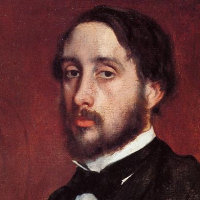 |
Edgar Degas, 1834–1917. French painter and sculptor.
The son of a wealthy banker, he originally trained for the law. When he did go into art, he painted mostly traditional subjects until Manet introduced him to the Impressionists, at which point he turned entirely to scenes from everyday life—including a good number of portraits, mostly in informal settings. Although he was the only artist to participate in all eight Impressionist shows, he strongly resisted the term, and pursued his own quite original course.
|
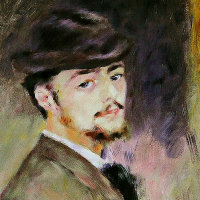 |
Pierre-Auguste Renoir, 1841–1919. French painter.
A leading member of the Impressionist group, he began his career as a china painter in the Limoges factory, which—together with his admiration of Rococo masters such as Watteau and Fragonard—may have influenced the sweetness of color seen in much of his work. He was more concerned with detail, and more interested in figures than most of his colleagues.
|
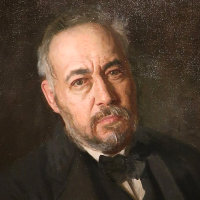 |
Thomas Eakins, 1844–1916. American painter.
Philadelphian Thomas Eakins is now counted among the greatest American-born painters of the 19th century, but in his day he was ridiculed for his insistence of realism in his portraits and scenes from everyday life. His legacy lives on, however, in the work of the Ashcan School and other painters at the turn of the century who began to give American art a distinct national style.
|
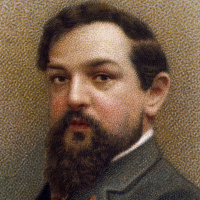 |
Claude Debussy, 1862–1918. French composer.
Debussy was one of the most original French composers of the 20th century and, with Ravel, the prime exponent of what is commonly called Impressionism, the creation of musical images through harmony, texture, and scraps of melody. Although an exquisite orchestrator, his most original works are probably those written originally for piano, including two books of Préludes from the last years of his life.
|
 |
Henri Matisse, 1869–1954. French painter and sculptor.
Matisse and Picasso stand as the giant pillars of French art in the first half of the 20th century. Matisse was the slower starter and the less versatile, but he stands alone for the richness of his color and the sensuality of his forms, whether in painting or in sculpture. Suffering from crippling arthritis at the end of his life, he produced a completely new oeuvre in colored-paper collage.
|
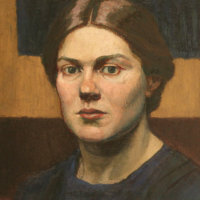 |
Gwen Raverat, 1885–1957. English printmaker and painter.
Although also active as a painter, Raverat was a founder of the Society of Wood Engravers, and a notable practitioner of the art itself. The granddaughter of Charles Darwin, she grew up in Cambridge and was active in the Bloomsbury Group, before moving with her husband, French painter Jacques Raverat, to the south of France.
|
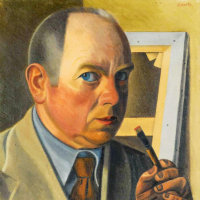 |
William Roberts, 1895–1980. English painter.
Roberts described his work before WW1 as that of an "English Cubist." After serving in the war, first as a gunner and later as a war artist, he became more representational in his work, though always slightly outside the mainstream. He was elected to the Royal Academy in 1966.
|
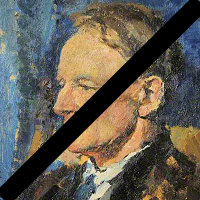 |
Kenneth Green, 1905–86. English painter.
Green grew up in Suffolk. Perhaps because of this, he did some work with his younger contemporary from the same area, Benjamin Britten, painting his portrait and doing costume designs for Peter Grimes (also set in Suffolk). Principally, however, he was in demand as a portrait painter, often of people with links to the arts. [The image here is by him, not of him.]
|
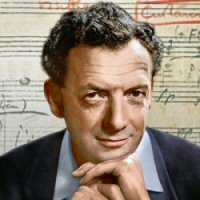 |
Benjamin Britten, 1913–76. English composer.
Arguably the leading opera composer of the mid-20th century, Britten's major operas have included Peter Grimes (1945), Billy Budd (1951), Gloriana (1953), A Midsummer Night's Dream (1960), and Death in Venice (1973), plus many stage works for smaller forces. He was equally active as a composer of instrumental music and text settings, and latterly as a conductor and accompanist.
|
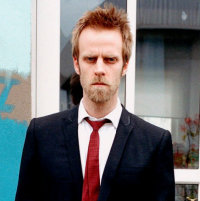 |
Stuart Pearson Wright, 1975– . English painter.
Wright enjoys a highly successful career as a portrait artist, with several works in the National Portrait Gallery. His 2001 portrait of past presidents of the British Academy won him the BP Portrait Award, a travel grant, and several other commissions.
|
















































